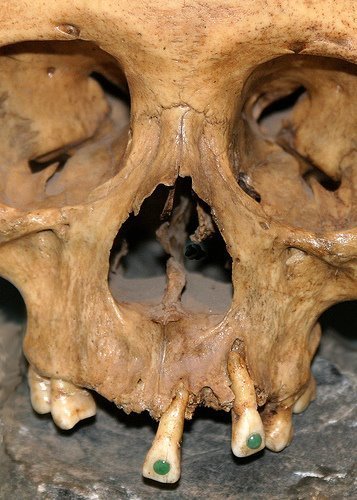In ancient times, as well as in some modern-day primitive tribes, tooth mutilations have carried ritualistic or cosmetic importance. One of the most notable examples is the famous Mayan skulls which still carry teeth inlayed with precious stones. These inlays were made of a variety of minerals of beautiful colors, including jadeite, iron pyrites, hematite, turquoise, quartz, serpentine and cinnabar.

The known history of dental implants begins more than 1300 years ago with this ancient Mayans artifact.
A 1930s archaeological dig led by Dr. Wilson Popenoe in Honduras turned up the ancient dental inlays. Similar discoveries were made when excavating ancient Egyptian artifacts. It was decades after these archaeological discoveries before the modern world caught up with the Mayans’ dental technology.
It was only in 1907 that a new and accurate method of casting gold inlays was announced by Dr. William H. Taggart. This technique was called the disappearing wax technique. He patented this technique but lost his patents when it was discovered that Dr. Philbrook of Denison, Iowa had written an article concerning gold inlay castings 25 years earlier. A copy of this article was found in the dental library of the University of Iowa.
